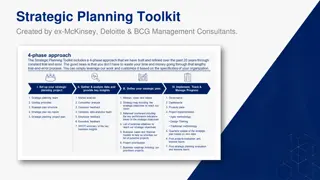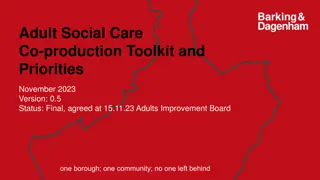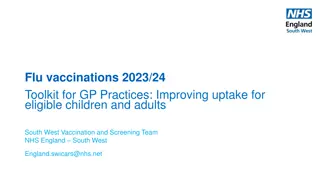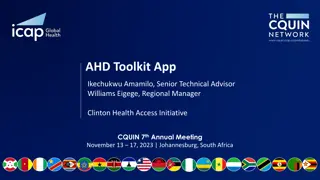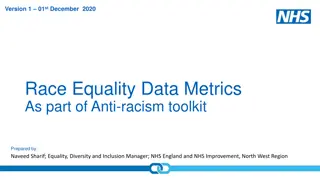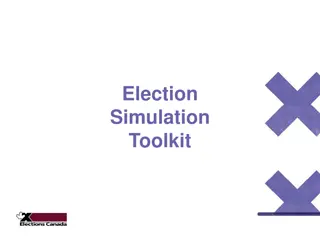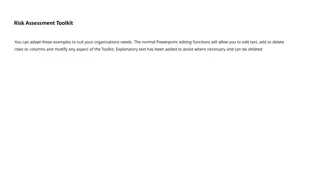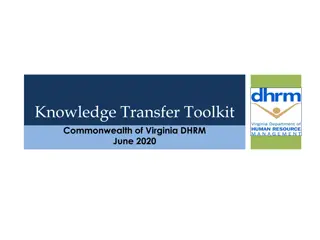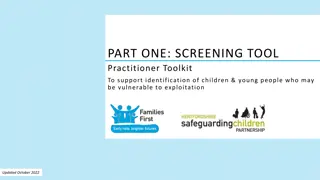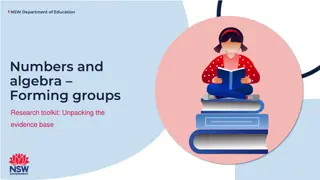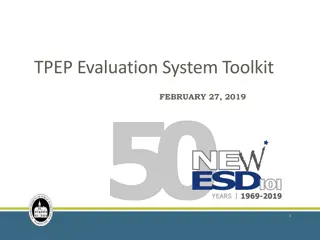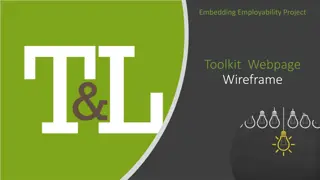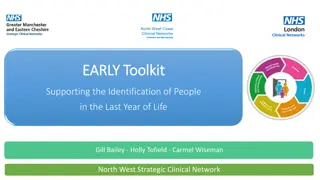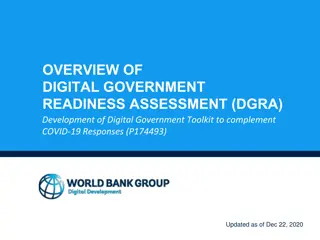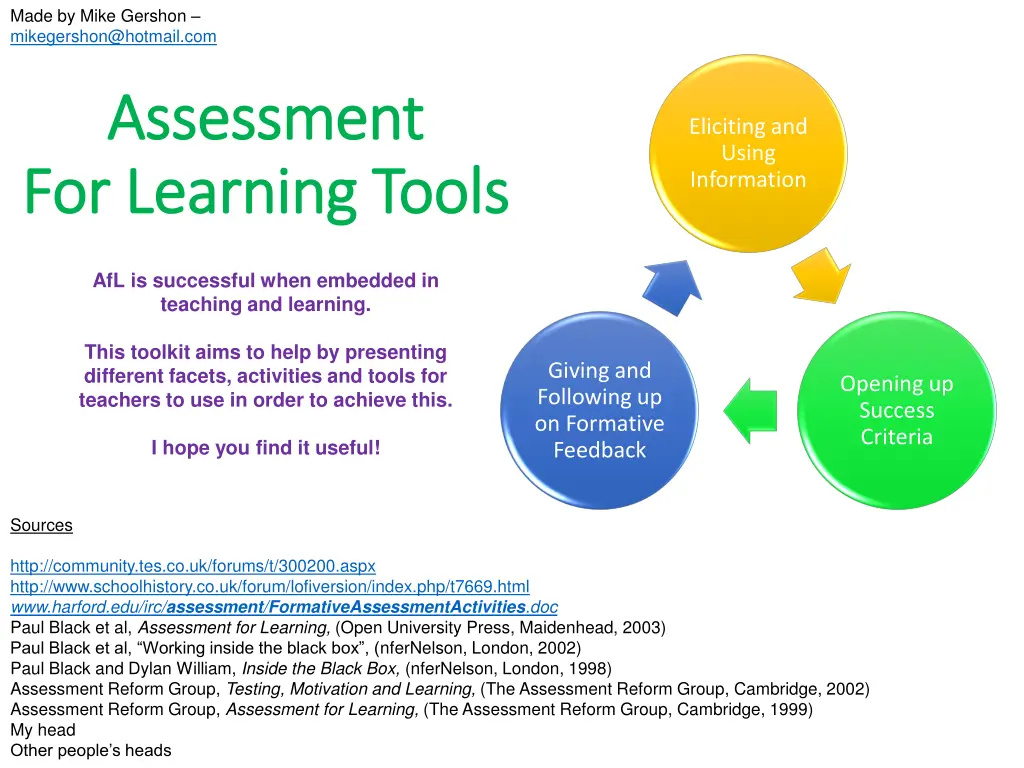
Effective Assessment for Learning Toolkit
Enhance teaching and learning with a comprehensive toolkit for Assessment for Learning (AfL), offering various strategies and tools to improve student engagement and understanding through formative feedback, open discussions, question prompts, and more.
Download Presentation

Please find below an Image/Link to download the presentation.
The content on the website is provided AS IS for your information and personal use only. It may not be sold, licensed, or shared on other websites without obtaining consent from the author. If you encounter any issues during the download, it is possible that the publisher has removed the file from their server.
You are allowed to download the files provided on this website for personal or commercial use, subject to the condition that they are used lawfully. All files are the property of their respective owners.
The content on the website is provided AS IS for your information and personal use only. It may not be sold, licensed, or shared on other websites without obtaining consent from the author.
E N D
Presentation Transcript
Made by Mike Gershon mikegershon@hotmail.com Assessment Assessment For Learning Tools For Learning Tools Eliciting and Using Information AfL is successful when embedded in teaching and learning. This toolkit aims to help by presenting different facets, activities and tools for teachers to use in order to achieve this. Giving and Following up on Formative Feedback Opening up Success Criteria I hope you find it useful! Sources http://community.tes.co.uk/forums/t/300200.aspx http://www.schoolhistory.co.uk/forum/lofiversion/index.php/t7669.html www.harford.edu/irc/assessment/FormativeAssessmentActivities.doc Paul Black et al, Assessment for Learning, (Open University Press, Maidenhead, 2003) Paul Black et al, Working inside the black box , (nferNelson, London, 2002) Paul Black and Dylan William, Inside the Black Box, (nferNelson, London, 1998) Assessment Reform Group, Testing, Motivation and Learning, (The Assessment Reform Group, Cambridge, 2002) Assessment Reform Group, Assessment for Learning, (The Assessment Reform Group, Cambridge, 1999) My head Other people s heads
Invert the Question Students write Questions Group Answers Students ask Questions X and Y Might Post-It Wait-time Hands Down Open vs closed Question Stems Teacher Review A B C D Articulate then Answer Show and Tell Idea Thoughts Enquiry Question Bouncing One-Sentence Summary Wait and recap Incorrect Discussion Thumbs
Back to AFL Tools Students write Questions Students write Questions For example About what they would like to know on a new topic Students To ask the teacher or other students in order to assess their learning To demonstrate their learning/misconceptions/areas they would like to further explore Write The classroom could have a question box where students drop questions at the end of a lesson. Questions Or, a plenary could involve students writing questions that the class then work on together, or forms the basis of the next lesson.
Back to AFL Tools Students ask Questions Students ask Questions Create opportunities for students to ask questions. This could be of their ? peers, of the teacher or as a means ? to develop discussion. A question box for written questions ? offers a different means of communication for students Allow time for students to ask questions about pieces of work. This helps open up assessment and eliminate ambiguity
Back to AFL Tools Might Might When questioning, insert the word might to give students greater opportunity to think and explore Might possible answers. e.g. Might What is meaning of democracy? Might What might the meaning of democracy be? The first infers a single answer known by the teacher whereas the second is inherently more open.
Back to AFL Tools Wait Wait- -time time Question Wait time allows students time to think Wait and therefore to produce answers. Also, not everyone in the class thinks at the same speed or in the same way waiting allows students to build their thoughts and explore what has been asked. 2 types of wait time i) Teacher speaks and then waits before taking student responses. ii) Student response ends and then teacher waits before responding. This gives the student space to elaborate or continue or for another student to respond. Answer
Back to AFL Tools Open vs closed Open vs closed Closed questions can be useful however are not great at facilitating the use of abstract thinking skills, Open encouraging talking or eliciting much understanding. Open questions are more likely to do this and thus Vs improve learning. e.g. Closed Did you go out last night? What did you after school yesterday?
Back to AFL Tools Teacher Review Teacher Review The teacher leads the review of the lesson or unit using questioning to elicit understanding from students. Focus could also fall upon the effectiveness of the lesson at facilitating learning i.e. can students think of ways that it could be altered to improve their learning? The teacher could model review by evaluating the lesson in relation to their own objectives.
Back to AFL Tools Articulate then Answer Articulate then Answer Give students the opportunity to articulate their thinking before answering Articulate 30 seconds silent thinking before any answers Brainstorm in pairs first for 2-3 minutes Write some thoughts down before answering Discuss with your neighbour first Then Answer
Back to AFL Tools Idea Thoughts Idea Thoughts When you have received an answer to a question, open up the thinking behind it by asking what others think about the idea. e.g. What do others think about _________ s idea?
Back to AFL Tools Bouncing Bouncing Bounce answers around the room to build on understanding and have students develop stronger reasoning Bounce out of misconceptions. E.g. Jimmy, what do you think of Bounce Sandra s answer? Sandra, how could you develop Bounce Carl s answer to include more detail? Carl, how might you combine all we ve heard into a single answer?
Back to AFL Tools Wait and recap Wait and recap Wait for students to draw out most of the key words you are asking for and then reframe the question asking for a synthesis which recaps the whole discussion by joining all these words into a single coherent answer, paragraph etc.
Back to AFL Tools Incorrect Discussion Incorrect Discussion Use incorrect answers as a discussion point. Incorrect Rather then dismissing something because it is wrong, or saying that s interesting etc. Use the misconception in reasoning to draw the process out into the open. Discussion This leads to improving on misconceived reasoning and an atmosphere in which it is OK to be Wrong.
Back to AFL Tools Thumbs Thumbs Check class understanding of what you are teaching by asking them Question to show their thumbs. Teacher informed about where students are at Thumbs up = I get it Thumbs half way = sort of Thumbs Thumbs down = I don t get it
Back to AFL Tools Invert the Question Invert the Question Instead of asking a question that requires factual recall, invert it to request explicit reasoning. Invert e.g. the Is France a democracy? becomes Question What does it mean for a country to be a democracy?
Back to AFL Tools Group Answers Group Answers Students work in small groups to agree on answers when tests are returned or in other situations. Group The process of agreeing should include reasoning over the validity of Answers the consensus answer, as well as reasoned negation of misconceptions or wrong answers.
Back to AFL Tools X X and Y X and Y Ask students why X is an example of Y and Y e.g. Why is an apple an example of a fruit? Why is a fox an example of a mammal? Questioning in this way avoids factual recall and asks for the underlying reasoning to be made explicit.
Back to AFL Tools Post Post- -It It Use post-it notes to evaluate learning. Groups, pairs or individuals can Post- answer: What have I learnt? What have I found easy? What have I found difficult? What do I want to know now? It Notes
Back to AFL Tools Hands Down Hands Down Tell pupils they should only raise their hand to ask a question, not to answer one. The teacher then chooses pupils to answer, therefore gaining information on whether everyone is learning. Hands www.classtools.net fruit machine programme on here where you can input names, save it and play it to choose pupils at random. Write names on lollipop sticks and pull out at random to answer. Down Write numbers on balls or counters that tally to register or seating position and re- use with every class.
Back to AFL Tools Good Question Stems Good Question Stems ??? ??? ??? ??? ??? ? ??? ??? ??? ??? ??? ? ??? ??? ??? ??? ??? Why does ? What if ? How would you ? Could you explain ? What might ?
Back to AFL Tools A B C D A B C D Laminate a set of cards so every Step 3 Step 2 Step 1 member of the class has four, with Teacher poses a question with four possible answers A, B, C and D. Students hold up a card to indicate what they think is the correct answer. Teacher uses the information to adapt the lesson. They might speed things up, slow them down or re- teach an idea. A,B,C and D written on them. Ask questions with four answers and pupils can show you their answer. Encourage them not to look at other people s response so as to copy.
Back to AFL Tools Show and Tell Show and Tell Use mini-whiteboards so that very student can write or draw their answer and show it to you (or their peers) immediately. Show and Tell
Back to AFL Tools Enquiry Question Enquiry Question ??? ??? ??? ??? ??? ? ??? ??? ??? ??? ??? ? Use an enquiry question to stimulate ??? ??? ??? ??? ??? high-level thinking in the lesson or unit. e.g. How democratic is the United Kingdom? Why is our school so ethnically diverse? What is enquiry-based learning - http://www.campus.manchester.ac.uk/ceebl/ebl/
Back to AFL Tools One One- -Sentence Summary Sentence Summary Students write a sentence summarising their knowledge of a topic. The sentence could have to include who, what when, why, how, where etc. The sentences could then be peer- assessed, re-drafted and so on.



